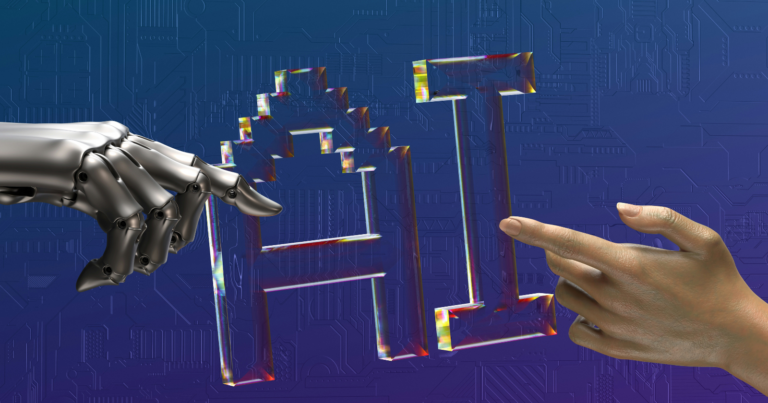Virtual Assistants Using AI: Unpacking the Efficiency Revolution
Have you ever found yourself wishing for a personal assistant to help manage your busy life? Well, AI virtual assistants are becoming increasingly adept at doing just that. From setting reminders to managing emails, these digital helpers powered by Artificial Intelligence are here to lend you a hand. Using advances in natural language processing, virtual assistants understand and respond to your requests in a conversational manner. Imagine asking for the weather forecast or to play your favorite song, and getting an immediate response as if you were chatting with a friend.

The technology behind these assistants is continuously evolving, making them more user-friendly and intuitive. AI virtual assistants learn from your habits and preferences, tailoring their assistance to your lifestyle. It’s like having a personal helper who knows you almost as well as you know yourself! They can handle a multitude of tasks that help streamline your day-to-day activities, such as scheduling appointments or even ordering your morning coffee. Isn’t it amazing how these virtual sidekicks help you boost your productivity without breaking a sweat?
As we move forward, we’re seeing more companies integrate AI assistants into their services, primarily because they can enhance efficiency and lead to cost savings. Remember, despite their range of capabilities, it’s also important to consider the limitations and ethical implications that come with such technology. But let’s keep the focus on the positive – a world where your AI assistant has your back, ready to help you tackle your to-do list with just a simple voice command. So, are you ready to welcome one into your digital life?
Evolution of Virtual Assistants

Virtual assistants have transformed dramatically, from basic programs performing singular tasks to complex AI-driven systems understanding and anticipating user needs.
From Simple Programs to AI-Powered Assistants
Remember the time when virtual assistants were nothing more than simple chatbots? They could answer basic questions and follow scripted responses. Fast forward to today, and it’s like comparing a bicycle to a sports car. Thanks to advancements in artificial intelligence (AI) and machine learning, virtual assistants now can learn from data and NLP (Natural Language Processing) to provide personalized assistance. Your smartphone’s helper that sets alarms? It’s all thanks to the shift from rules-based systems to AI-powered assistants.
Key Technological Advances
Ever wondered what’s behind the smart assistants that recommend your next song or find the quickest route home? Well, it’s a bunch of breakthroughs in deep learning and machine learning algorithms that process vast amounts of data to learn and improve. Here’s a quick rundown:
- Natural Language Processing (NLP): This is how virtual assistants understand you. NLP has progressed from recognizing simple commands to grasping context and nuances in conversation.
- Deep Learning: Essentially, it’s about neural networks—AI mimicking the human brain—getting deeper and smarter.
- Data: It’s the fuel for the AI engine, with terabytes of it training models to better predict your needs.
And there’s a cool tidbit for you: virtual assistants are expected to be used daily by half of knowledge workers by 2025, up from just 2% in 2019. Imagine that!
Understanding Virtual Assistants and Their Capabilities
Hey there! Ever wondered how virtual assistants can make your life easier? You’re about to dive into the world of AI assistants—your go-to digital companions for scheduling, task management, and more.
Defining AI Virtual Assistants
What are AI Virtual Assistants? Quite simply, they’re software programs that use artificial intelligence to perform tasks and services for you, the user. Equipped with natural language processing (NLP), they’re designed to understand and interpret your commands, whether that’s through text or voice. Think of your AI assistant like a digital sidekick that can manage your calendar, remind you of important dates, and even control your smart home devices with a simple voice command.
Scope of Abilities and Tasks
What can they do? A whole lot! These AI-powered helpers are not limited to basic tasks. Here’s a snapshot of their capabilities:
- Scheduling Appointments: Sync your calendar and say goodbye to double bookings.
- Task Management: Organize your to-do list with ease.
- Reminders: Forget forgetfulness. They’ve got your back with timely nudges.
- Answering Questions: Just ask and get instant responses on various topics.
AI virtual assistants don’t just react; they anticipate your needs. They can proactively provide information based on your routines and preferences, making your interaction with technology seamless and, dare we say, enjoyable. Plus, with ongoing advancements, the efficiency of virtual assistants is skyrocketing, paving the way for even more intricate and personalized assistance. So, are you ready to team up with an AI buddy?
User Experience and Interaction
Ever wondered why chatting with a virtual assistant feels almost like talking to a human? That’s because AI-driven virtual assistants are changing the way we interact with technology, giving a more personalized and communicative experience than ever before.
Conversational Interfaces and NLP
Natural Language Processing (NLP) gives virtual assistants the ability to understand your user queries in a conversational manner. It’s like they can almost read your mind! When you ask a question or issue a command, NLP algorithms work behind the scenes to interpret your words and grasp the intent. This means you don’t have to use specific phrasing—just talk as you would to a friend. For instance, whether you ask, “What’s the weather like today?” or “Do I need an umbrella?” your AI buddy uses voice recognition to decipher and respond appropriately. This makes communication feel natural, almost forgetting you’re talking to a machine.
- Easy to understand: Virtual assistants use voice and text commands.
- Enhanced interaction: Understands colloquialisms and varied expressions.
Personalization and Customization
Virtual assistants aren’t just about understanding you; they’re also about knowing you. Through personalization and customization, they offer tailor-made responses and actions based on your past interactions. This bespoke approach is possible due to the AI’s ability to learn from your user interactions and preferences over time, making each experience uniquely yours. You like rock music? Just say the word, and your virtual assistant can compile a playlist in your preferred genre—a personal DJ at your command!
- Individualized experiences: Adapts responses based on user history.
- Control at your fingertips: Offers customization options for a variety of features.
With every “Hey!” and every “Could you…?”, you’re engaging in a dance with sophisticated AI, where your steps are user interactions and the rhythm is determined by customization options and communication efficiency. So, go ahead, have a little chat with your AI assistant—you might be surprised at how well it knows the next move!
Virtual Assistants in Business and Marketing

In today’s fast-paced market, virtual assistants using AI are redefining how you can streamline your business operations and engage with customers. They’re not just supporting roles anymore; they’re becoming key players in driving efficiency and enhancing the customer experience.
Enhancing Productivity and Collaboration
Productivity and Project Management
Boosting your productivity is a breeze when you’ve got AI virtual assistants by your side. They can manage schedules, set reminders, and even help prioritize tasks based on urgency and importance. Just imagine having an assistant that never sleeps and is always on top of your calendar—sounds like a dream, right?
- Collaboration Across Teams
It isn’t about flying solo; it’s about synergy. AI virtual assistants can facilitate project management and ensure everyone is on the same page, no matter where they are. They keep the communication flowing seamlessly, whether it’s about assigning tasks or tracking progress.
E-commerce and Customer Service Integration
Boosting Sales through Personalization
Let’s get personal, shall we? Virtual assistants can analyze customer data to provide personalized recommendations and services, making sure your sales strategy hits the mark every time.
- Revolutionizing Customer Service
Keeping customers happy is the name of the game, and AI virtual assistants are game-changers. They provide immediate responses to inquiries, and with the power of natural language processing, they’re getting more adept at understanding and solving customer issues efficiently. No more waiting on the line listening to hold music, right?
E-commerce Integration
Shopping online should be a walk in the park, and virtual assistants ensure it stays that way. They can handle checkouts, assist in finding products, and even support post-sales support, integrating seamlessly with your e-commerce platform.
So, there you have it—a glimpse into how virtual assistants using AI can revolutionize your business and marketing approach. Don’t get left behind; embrace the change and see the difference for yourself!
Integrating Virtual Assistants with Smart Devices

Virtual Assistants are now more than just voice-activated helpers; they’re becoming the central hubs of smart homes and personal technology ecosystems. Let’s dive into how these AI powerhouses are merging with smart devices to simplify your life.
Home Automation and Security
Ever dreamt of a home that responds to your every command? Smart home devices have made that dream a reality, especially when integrated with virtual assistants such as Amazon Echo and Google Home. Picture this: you’re cozied up in bed and you realize you’ve left the lights on downstairs. No problem! A quick “Hey Alexa, turn off the living room lights” and voila, your wish is the Echo’s command.
- Smart speakers and Smart displays act as the brains of the operation, interfacing with various devices like thermostats, locks, and security cameras.
- Security is another critical aspect. With these assistants, you’re able to keep an eye on your home 24/7. Simply ask, “Hey Google, show me the front door camera” and the footage can pop up on your smart display or smartphone instantly.
Wearable and Mobile Technology
Have you ever left the house and then panicked about whether you locked the door? That’s where wearables and mobile technology come in handy. Not only do they keep you connected on the go, but they also extend the reach of virtual assistants outside the home.
- With a tap on your smartwatch, you can control your home’s temperature or check on your security system.
- Your smartphone acts as the ultimate remote control, allowing you to interact with your virtual assistant wherever you are.
Whether you’re managing your smart home or keeping tabs on your fitness stats, integrating virtual assistants with wearable technology makes the experience seamless and downright futuristic. Isn’t it amazing how a simple voice command to your wrist can set your home to the perfect ambiance for your return?
The Future of AI Virtual Assistants

The trajectory of AI virtual assistants is poised for impressive growth, leveraging advancements in technology to become more integrated into our daily lives. Here’s the scoop on how they’re about to get smarter and more indispensable.
Advancements in AI and Machine Learning
AI and machine learning innovations are the backbone of the virtual assistant revolution. Imagine having a personal assistant that not only understands your requests but also anticipates your needs. That’s where we’re headed! With machine learning algorithms becoming more sophisticated, these virtual helpers are improving at a pace that’s nothing short of remarkable. They’re moving beyond simple command-response functions, evolving into systems that can:
- Learn from your habits: Whether you’re a night owl or an early bird, your virtual assistant will tailor its interactions based on your routines.
- Understand context and nuance: Sarcastic much? Your virtual assistant will soon get your jokes and maybe even throw one back!
AI-powered virtual assistants in 2024 have become more capable, and can increase employee productivity by up to 25% — a stat that’s too good to ignore.
Emerging Trends and Predictions
As we peer into the crystal ball of emerging trends, it’s clear that cloud computing plays a big part. Your virtual assistants are headed to the cloud, which means they’ll be faster, more accessible, and even more secure. What’s not to love?
Let’s break down a few predictions that are shaking up the virtual assistant world:
- Ubiquity: Thanks to the cloud, these AI pals will be everywhere — at home, in your car, and at work, making sure you stay on top of everything without breaking a sweat.
- Personalization at scale: Think of a virtual assistant that knows you as well as your best friend. Using data analytics, it’ll tailor its functionality to you, and only you!
According to Gartner, by 2025, 50% of knowledge workers are predicted to use a virtual assistant daily. It’s going to be a game-changer, and we’re just getting started.
Challenges and Considerations
When implementing an AI virtual assistant, you’re not just looking at a new gadget to play around with. You’re diving headfirst into a complex world where considerations like privacy, security, and ethical implications are just as important as ensuring top-notch customer experience and navigating the maze of regulations. It’s a balancing act, and getting it right isn’t always easy.
Privacy, Security, and Ethical Implications
Have you ever wondered if someone’s listening when you’re talking to your virtual assistant? Privacy and security are significant concerns. Your data is precious, and the thought of it leaking or being misused is nothing short of a nightmare. AI virtual assistants collect heaps of data to personalize responses and improve accuracy, but they need to keep that data under tight wraps.
- Privacy: Sensitive information might be at risk if not properly guarded.
- Security: Ensuring robust encryption and safeguard measures is critical to prevent data breaches.
And let’s not forget the ethical implications. We’re talking about AI programs making decisions that could have real-world impacts. It’s essential to consider how these decisions are made and the values they’re based on.
Regulations and Standards
Now, let’s wade into the regulatory soup. Different countries have different rules, and keeping your virtual assistant on the right side of the law is like a high-stakes game of Twister. Compliance with regulations such as GDPR is non-negotiable when it comes to user data.
- Regulations: International and local laws that must be followed.
- Standards: Quality and security benchmarks that need to be met.
Creating an AI that’s both helpful and compliant is a bit like threading a needle while riding a rollercoaster, isn’t it? But get it right, and you’ve got a virtual helper that’s not only efficient and easy to talk to but also trustworthy and law-abiding.
Implementation and Best Practices
When you’re ready to introduce an AI virtual assistant to your business, thinking about the implementation process and best practices is crucial. Considering the technical, financial, and user experience aspects up front can help ensure that the integration is smooth and the return on investment (ROI) is clear.
Setting Up for Success
To set your AI virtual assistant up for success, firstly, you’ll want to define your objectives that align with business growth. What tasks do you need to automate? Who are the users and how will they interact with the assistant? Planning involves both the budget and the expected outcomes.
Start with these steps:
- Identify the tasks for automation that can truly benefit from an AI assistant.
- Choose the right platform that aligns with your business needs and user expectations.
- Prepare a clear roadmap that includes timelines, milestones, and budget considerations.
Remember, the user experience (UX) is key, so design conversations that feel natural. Think of the assistant as a new team member – what training will they need to understand your business inside and out?
Measuring Effectiveness and ROI
Now, let’s talk numbers. How will you know if your AI virtual assistant is a hit? Measuring effectiveness and ROI is all about impact. You’ll want to track metrics like customer satisfaction, resolution times, and cost savings. KPIs should be established to monitor the assistant’s performance constantly. Look at both qualitative and quantitative data to verify the assistant’s contribution to your business.
Questions to consider:
- Has the assistant reduced workload for your human employees?
- Is there an improvement in customer service metrics?
- Are you saving costs on customer service without sacrificing quality?
By implementing and continuously measuring your virtual assistant’s performance, you’re not just investing in technology but in a tool that ushers your business into the future. Keep the feedback loop open and your AI assistant will evolve, contributing even more to business growth.
Frequently Asked Questions
As you explore the world of AI-powered virtual assistants, certain questions tend to pop up quite often. From understanding what’s out there to diving into the technology driving these digital helpers, we’ve got the FAQs covered just for you.
What are some popular examples of AI-powered virtual assistants I can use?
If you want to dip your toes into the AI assistant pond, think of household names like Siri and Google Assistant. They’re the buddies helping you set reminders, answer queries, or even joke around when you need a laugh.
Looking for a top-notch AI assistant for your PC? Which one leads the pack?
When it comes to PCs, Microsoft’s Cortana can be quite the aide. From organizing your schedule to assisting with your searches, Cortana aims to make your PC experience smoother.
In the realm of AI virtual assistants, what are some cost-free options available?
No need to crack open the piggy bank! Both Siri and Google Assistant are available for free, often coming pre-installed on smartphones and other devices, so you can start chatting away without spending a dime.
Curious about how AI breathes life into digital assistants? Let’s unwrap the tech behind it!
At the heart of these AI assistants is Natural Language Processing (NLP), which gives them the magic to understand and respond to our commands. If you’ve ever asked your assistant to play music or check the weather, you’ve witnessed NLP in action.
Ever wondered about the innovative AI assistants available? What are their names?
Apart from the big names like Siri and Google Assistant, you might want to check out Amazon’s Alexa or IBM’s Watson Assistant. Each comes with its unique flair of helping users navigate their digital lives.
Interested in creating your own AI virtual assistant using Python? Where to begin?
If you’re itching to create a personalized AI sidekick, Python is a fantastic starting point. With libraries like NLTK or spaCy, you can jumpstart your project, while many online tutorials guide you through the intricacies of coding your assistant.







